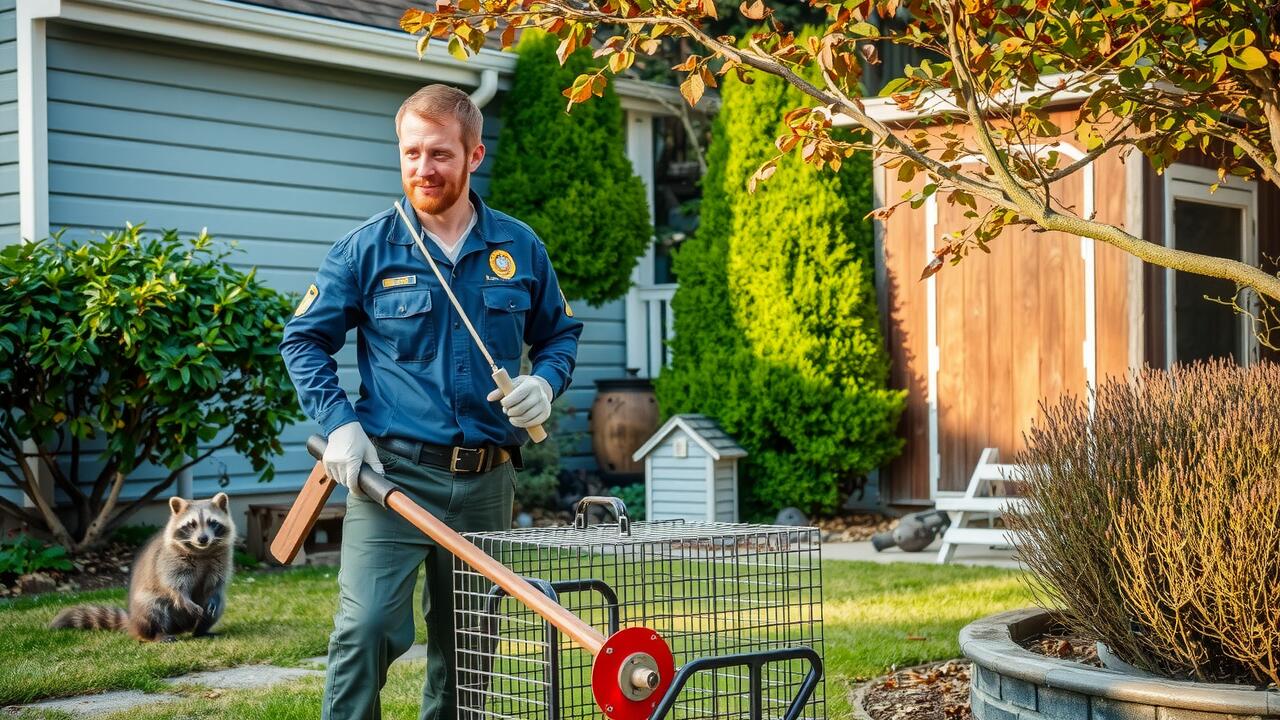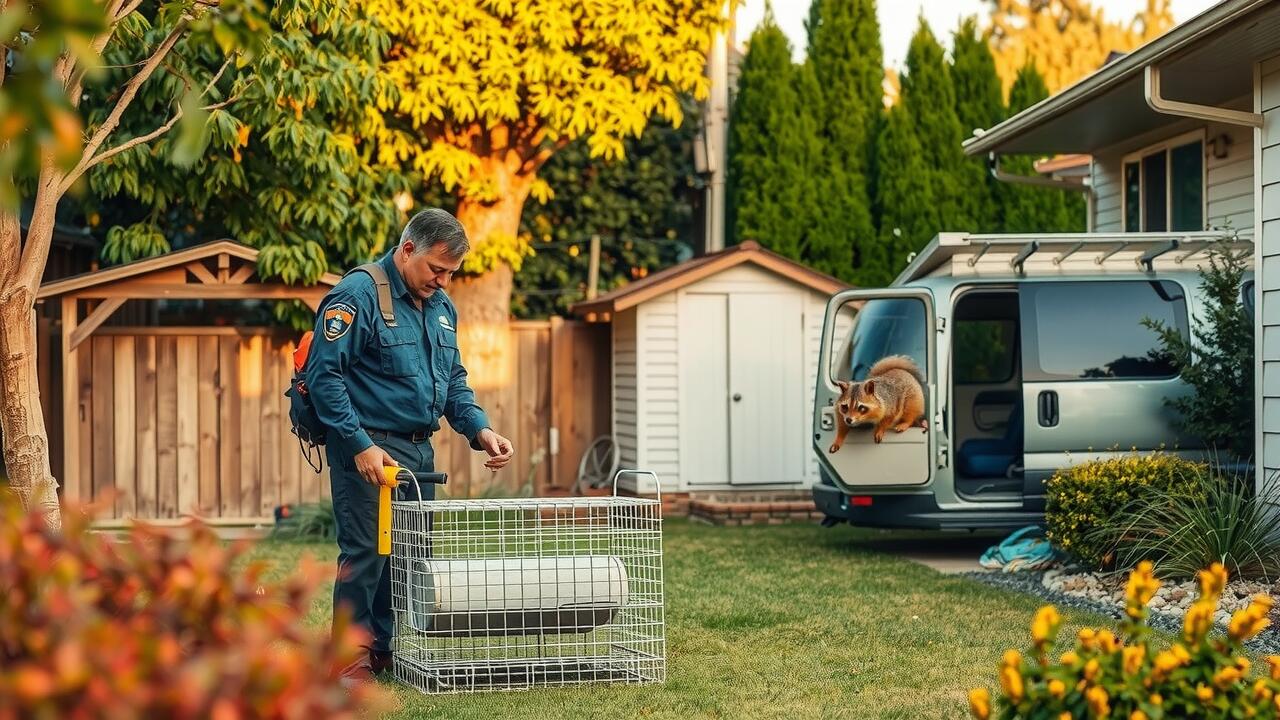
Landscaping Strategies for Prevention
Creating a wildlife-friendly landscape involves thoughtful planning and execution. Selecting native plants for gardens can significantly reduce the chances of attracting unwanted animals. Native species are adapted to the local environment, requiring less water and maintenance. Incorporating natural features, such as boulders or logs, can enhance the beauty of a space while providing habitat for beneficial wildlife, minimizing encounters with pests.
Utilizing proper landscaping design helps deter larger animals from invading residential areas. Establishing physical barriers, such as fences or hedges, can keep certain species at bay. It may also be beneficial to consult with professionals who specialize in Commercial Wildlife Removal in Spring, Texas for additional insights. These experts can provide valuable information on how to create an environment that minimizes wildlife intrusion while still being aesthetically pleasing and functional for homeowners.
Choosing Native Plants and Design Features
Selecting native plants for your landscaping is an effective strategy for minimizing interactions with local wildlife. These plants are naturally adapted to the local climate and soil conditions, which reduces the need for chemical fertilizers and pesticides. Choosing native species can create a balanced ecosystem that supports beneficial insects and wildlife while deterring more problematic species. Utilizing dense plantings or thorny varieties also provides natural barriers that discourage animals from entering your garden.
Incorporating design features such as raised beds, rock gardens, or water features can enhance the aesthetic appeal of your landscape while simultaneously serving as deterrents to wildlife. These elements can create more challenging environments for animals that might otherwise invade your space in search of food or shelter. In instances where wildlife encounters do occur, knowing options for Commercial Wildlife Removal in Spring, Texas, can provide swift solutions for those unexpected visits.
Safe Waste Management Practices
Effective waste management is crucial in minimizing wildlife encounters in residential areas. Secure trash cans with tight-fitting lids to deter animals from foraging. It is essential to dispose of food waste properly and consider composting methods that do not attract critters. Keeping outdoor areas clean can significantly reduce the likelihood of attracting unwanted wildlife.
Regular checks and maintenance of waste disposal areas help ensure they remain wildlife-proof. Be cautious with recycling bins, as they can also attract animals if not secured. In cases of persistent problems, seeking assistance from professionals offering Commercial Wildlife Removal in Spring, Texas, can provide additional support for managing wildlife challenges in your area.
Reducing Attractants Around Your Home
Proper waste management is essential in reducing attractants around the home. Secure garbage containers with tightly fitting lids to prevent animals from accessing food scraps. Compost piles should be maintained carefully, as they can also draw attention from wildlife. Storing pet food indoors and cleaning up any fallen fruits or nuts from trees will help deter animals looking for an easy meal.
Increasing awareness about the importance of reducing attractants can foster better community practices. Homeowners should consider adopting measures such as fencing gardens and removing bird feeders during peak wildlife activity times. For persistent issues, seeking assistance through services like Commercial Wildlife Removal in Spring, Texas, can provide expert solutions. Taking these proactive steps can minimize wildlife encounters and create a safer living environment.
Educating the Community
Educating the community about wildlife prevention plays a crucial role in minimizing human-wildlife conflicts. Workshops and seminars hosted by local organizations can provide residents with valuable information on how to coexist peacefully with local wildlife. Engaging with schools and community groups can enhance awareness and encourage proactive measures. Sharing success stories or case studies can further illustrate the impact of education on wildlife preservation.
Additionally, partnering with professionals in the field, such as those offering Commercial Wildlife Removal in Spring, Texas, can enhance community knowledge. These experts can provide insights into best practices for maintaining a wildlife-friendly environment while preventing potential problems. Providing resources and guidance fosters a culture of respect for wildlife and encourages responsible behaviors among residents.
Raising Awareness About Wildlife Prevention
Community engagement plays an essential role in wildlife prevention efforts. Providing information on local wildlife behaviors, habitats, and the importance of coexistence helps residents understand how to protect their homes and the environment. Educational workshops and informational flyers can serve as valuable resources, enabling individuals to adopt best practices for wildlife management in their daily lives. Events that encourage discussions about nature can promote a sense of responsibility and stewardship among community members.
Promoting services such as Commercial Wildlife Removal in Spring, Texas, enhances awareness of professional resources available to residents facing wildlife issues. These services not only help in humanely addressing infestations but also provide guidance on preventative measures. Collaboration with local wildlife experts can foster a more informed community, equipping residents with the tools they need to minimize human-wildlife conflicts. Public outreach initiatives can further elevate understanding of the ecological balance and the role each person plays in maintaining a harmonious relationship with wildlife.
FAQS
What are some effective landscaping strategies for wildlife prevention?
Effective landscaping strategies include choosing native plants that are less attractive to wildlife, creating barriers using design features, and maintaining a well-kept garden to discourage animals from entering your property.
Why should I choose native plants for my landscape design?
Native plants are better adapted to the local environment, require less maintenance, and are less likely to attract wildlife that might become problematic. They also support local ecosystems.
How can I manage waste to prevent attracting wildlife?
Safe waste management practices include securing trash in animal-proof containers, composting properly, and keeping food waste inside until disposal. This minimizes odors and prevents animals from being drawn to your property.
What are some common attractants that I should reduce around my home?
Common attractants include pet food left outside, birdseed, fallen fruit, and unsecured garbage. By managing these items, you can significantly reduce the likelihood of wildlife visits.
How can I educate my community about wildlife prevention?
Community education can be achieved through workshops, informational flyers, social media campaigns, and local events that raise awareness about the importance of wildlife prevention and best practices for residents.
